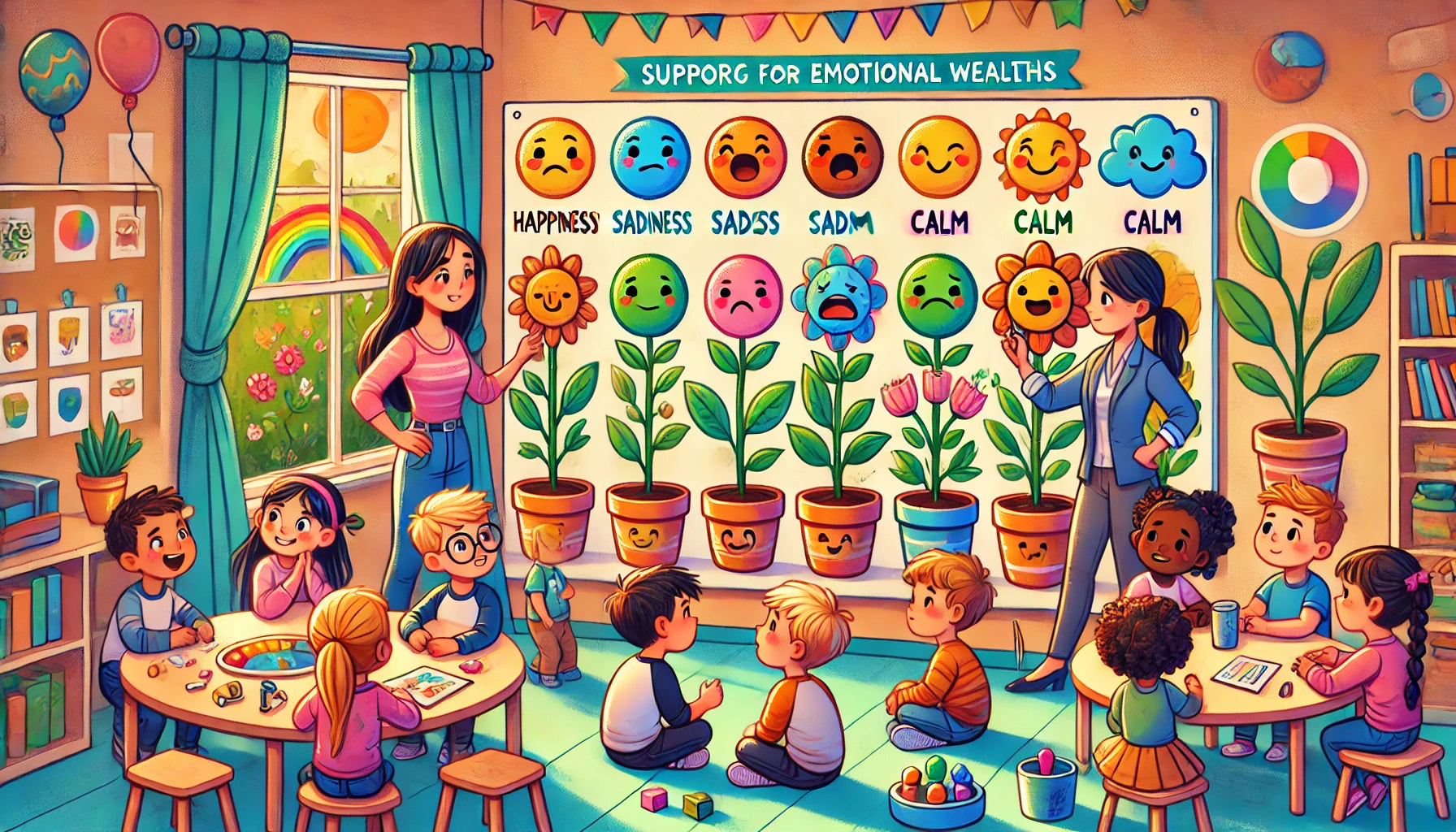As parents, one of the greatest gifts we can give our children is the ability to understand, express, and manage their emotions in healthy ways. Between ages 8 and 12, children are often starting to experience complex feelings but may struggle with how to talk about them. Encouraging open emotional expression not only strengthens your relationship with your child but also fosters resilience, self-awareness, and empathy—all of which are key to lifelong mental well-being. By creating an environment where emotions are openly discussed and providing fun, interactive tools, you can help your child feel safe, seen, and understood.
1. Start with Calm and Consistent Conversations
Set a calm tone and create an open space for regular “check-ins.” Try sitting down with your child at the end of each day to ask gentle, specific questions like, “What was something fun about your day? Was there anything that made you feel upset or confused?” By asking questions that require more than a “yes” or “no” answer, you’re showing your child that emotions are an expected and welcome part of life, not something to be avoided.
Let them know it’s okay to have mixed or difficult feelings. This will allow them to speak openly without fear of judgment. The key is to maintain a sense of calm, which signals to them that their emotions won’t overwhelm you and that you’re there to help them process these feelings together.
2. Interactive and Stress-Relieving Games for Expressing Emotions
To make emotional learning engaging and enjoyable, try integrating these playful, stress-relieving activities that teach coping mechanisms in a subtle, enjoyable way:
-
Emotion Charades: Write different emotions (happy, scared, frustrated, excited, etc.) on slips of paper. Take turns drawing and acting them out without words, while the other person guesses. This is a fun way for kids to recognize and label emotions, giving them the vocabulary and confidence to express how they feel.
-
The Worry Monster: Use a small box, stuffed animal, or even a decorated “monster” jar. Encourage your child to write down anything that makes them feel worried or scared and “feed” it to the worry monster. Once they’ve let the monster hold onto it, discuss what’s on their mind and think of positive ways to respond to those worries.
-
Breathing Buddies: This game teaches children deep breathing techniques, which are useful for managing stress and calming down. Have your child lay down and place a stuffed animal on their stomach. Encourage them to breathe in slowly, watching the stuffed animal rise, and then exhale, watching it fall. Practicing this helps children connect with their breath and use it as a calming tool.
-
Create an “Emotion Weather Report”: Ask your child to think about their day and describe their feelings as types of weather (e.g., “Today felt stormy because I was frustrated with school,” or “It’s a sunny day because I had fun with my friends”). This game makes it easy for kids to share and gives you a playful insight into their emotions.
3. Teaching Coping Skills in a Safe, Playful Way
It’s important that children feel confident about managing their feelings independently, too. Simple activities that help them develop self-soothing techniques or coping strategies can be transformative as they face everyday challenges. Here are a few more interactive ideas:
-
Calming Jars: Let your child make a “calming jar” by filling a clear jar with water, glitter, and a bit of glue. When they’re feeling anxious or frustrated, they can shake the jar and watch the glitter settle, which can help them focus on calming down as they wait for the glitter to settle.
-
Positive Affirmation Cards: Work with your child to create a set of cards with positive statements like, “I can solve problems,” or “I am loved.” These reminders can help reinforce self-compassion and resilience, especially on tough days.
-
Emotion Matching Game: Create pairs of cards with different emotions, and play a matching game similar to memory. As they match, take turns discussing a time when you felt each emotion. This helps your child normalize various feelings and recognize that all emotions are part of being human.
The Pretherapy Box – Preparing Before You Need to Repair
If you’re seeking an even deeper resource for your child, consider introducing them to the Pretherapy Box. This carefully curated box is designed specifically to provide children, particularly those with ADHD, with tools and exercises that promote resilience, focus, and self-regulation. Think of it as a “DIY therapy toolkit”—one that empowers your child with the skills to manage their emotions and handle life’s challenges independently.
Inside, they’ll find activities that not only relieve stress but also build important coping mechanisms, from guided exercises to visual aids and tactile objects for grounding and focus. It’s a wonderful preparatory tool, giving your child the confidence and capability to navigate their own emotional journey, reinforcing the motto: “Pretherapy – preparing before you need to repair.”
With the right environment, consistent support, and resources like the Pretherapy Box, your child can grow up feeling equipped and empowered to face any challenge life brings. By teaching them that expressing emotions is not only safe but also celebrated, you’re setting them up for a future of emotional resilience and strength.




Leave a comment
This site is protected by hCaptcha and the hCaptcha Privacy Policy and Terms of Service apply.